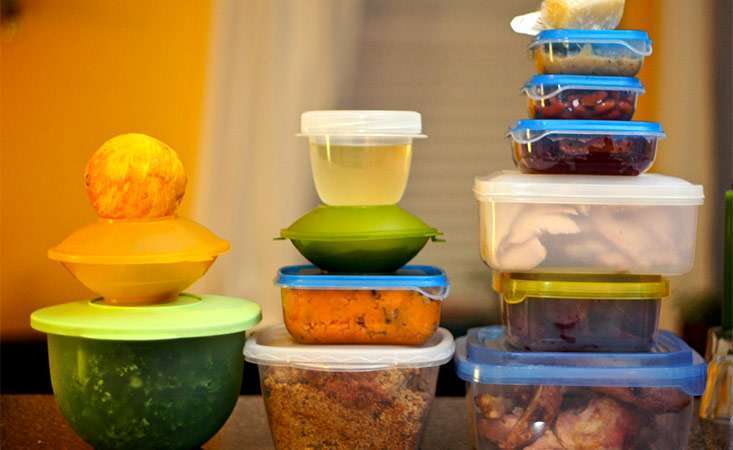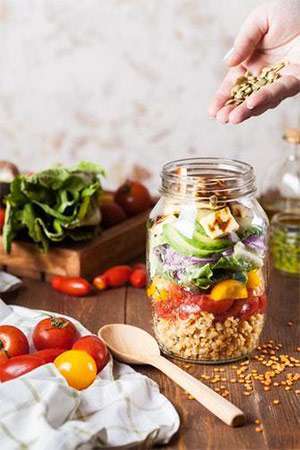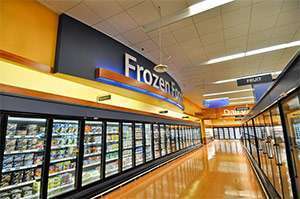
Meal prepping is the process of cooking and portioning many meals and then freezing, jarring or refrigerating them for later consumption.
Whether tracking doctor’s appointments or creating a treatment plan, living with pancreatic cancer requires organization and preparation. Meal planning and ensuring you’re getting proper nutrition are important daily considerations.
The Pancreatic Cancer Action Network (PanCAN) knows this can be difficult – chemotherapy can reduce your appetite and change the taste of even your favorite dishes. Plus, you may be too tired to cook after surgery or an infusion on any day. That’s where meal prepping can come in handy.
Meal prepping is the process of cooking several days’ worth of food, portioning meals and then freezing, jarring or refrigerating them for later consumption. Consider asking a friend or family member to help.
5 Foods Easy to Freeze or Refrigerate

Pre-made salads are a great way to meet your daily produce needs, just be sure to add the dressing when you’re ready to eat them, not when you make them. (Photo by Mariana Medvedeva)
- Pre-portioned diced fruit to use in smoothies or as a yogurt topping
- Soups, rich broths and stews from beef and veggie to hearty chili
- Casseroles like lasagna, macaroni and cheese, quinoa with vegetables or rice and beans
- Meats, like herbed chicken or turkey meatloaf, that can be incorporated into many options from easy sandwiches to larger dishes
- Pre-made and jarred salads
4 Foods to Avoid Freezing
- Fruit or vegetable salads: they can get soggy
- Fried foods: thawing and reheating will cause them to lose their crunchy texture
- Some meals with a cream, dairy or mayonnaise base
- Some noodle dishes: spaghetti, for example, may become rubbery
10 Meal-prep Safety Tips
- Keep the refrigerator temperature at or below 40 F (4 C). The freezer temperature should be 0 F (minus 18 C).
- Use airtight containers to reduce the risk of bacterial contamination.
- Be sure your containers are freezer safe, if you plan to put them in the freezer, and microwave safe, if you plan to reheat them in the microwave.
- Allow foods to completely cool before refrigerating or freezing to preserve flavors and textures.
- Zip-top storage bags are useful for the fridge, freezer or pantry, but do not microwave or boil foods inside these plastic baggies.
- Buy boil-in-bags for foods you want to take straight from the refrigerator or freezer and put on the stove top.
- Don’t overfill containers or bags. Some foods will expand during the freezing process. If there isn’t enough space, they could burst open and ruin your meal and your freezer.
- Write the name of the food and the preparation date on the container, so you know when the meal could spoil.
- Frozen foods do have an expiration date, although try not to leave them there for longer than 90 days.
- Freezer burn does not mean food is unsafe to eat, though the dish may taste different.
If you aren’t up for doing a full-scale meal prep, consider using a meal subscription service. There are several to choose from, including services that send already prepared and portioned meals as well as others that send the ingredients with recipe cards.

The frozen foods section of the grocery store can be a good place to stock up on pre-made meals.
Additionally, walk the aisles of the frozen or pre-made food sections of your grocery store. Some of these meals are filled with preservatives that can make them high in sodium. Be sure to check the nutrition panel before dropping them in your shopping cart.
Also, meal replacement shakes and bars may be good alternatives, if you don’t feel up to cooking or eating a larger meal at the time.
Come back to our blog each week for a new installment of the Friday Fix.
















